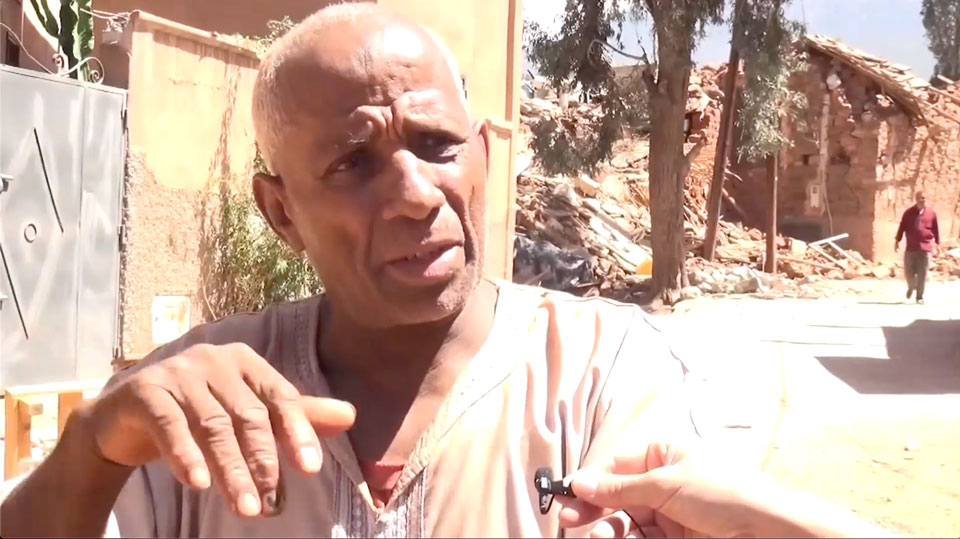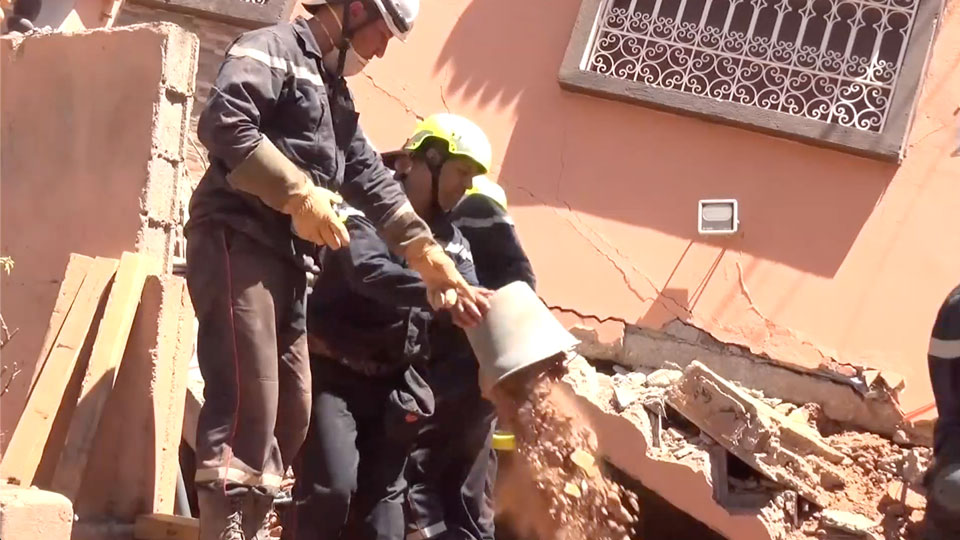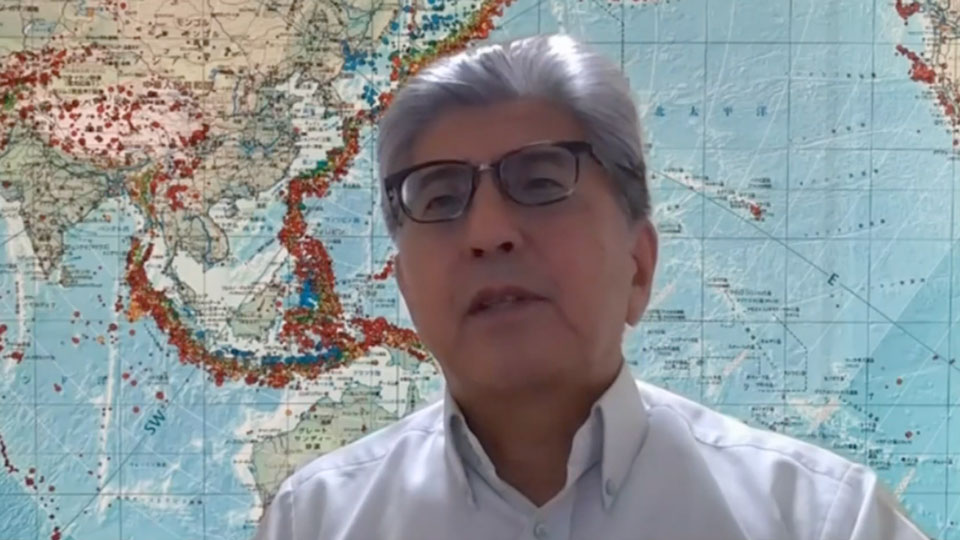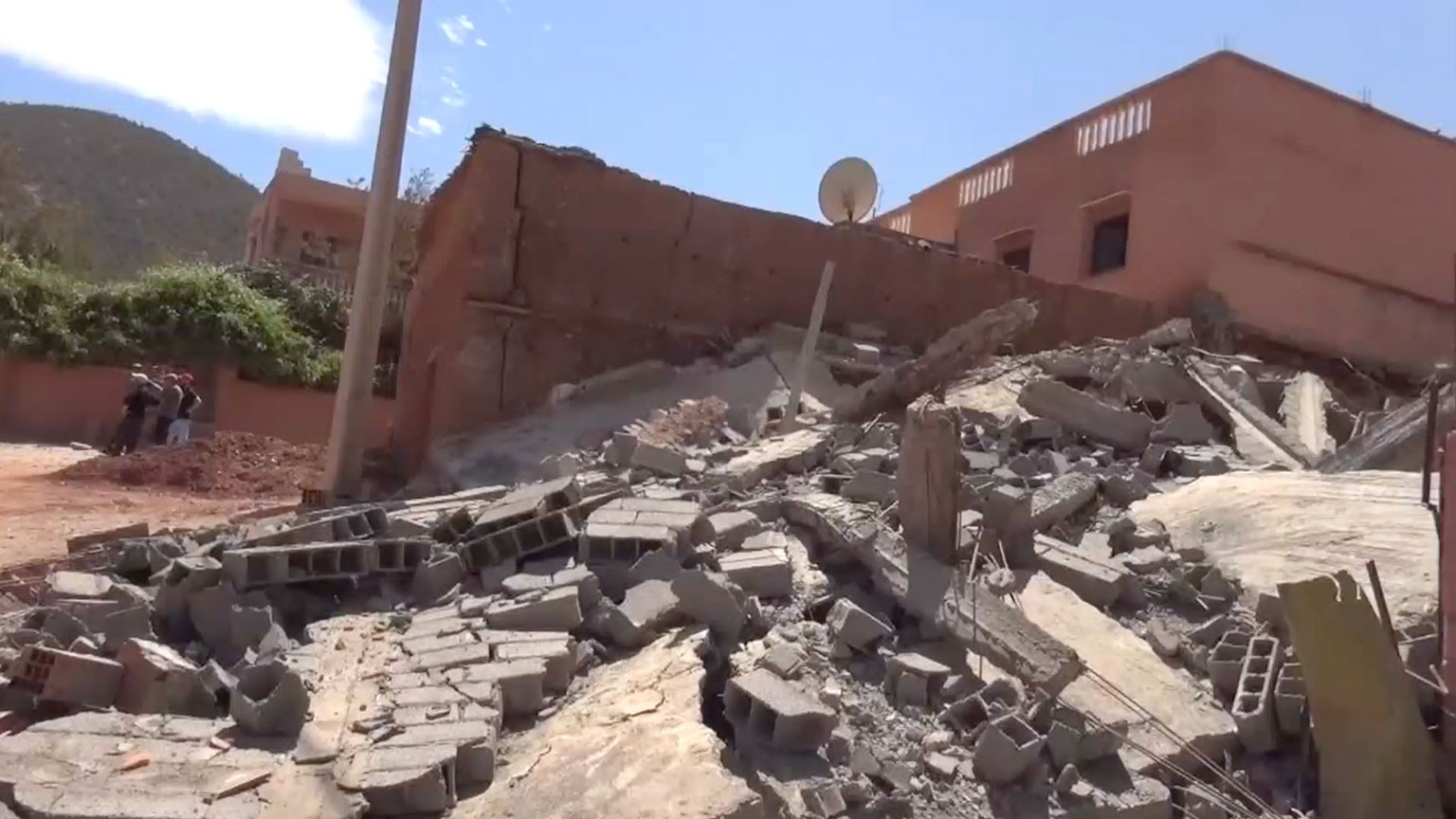The US Geological Survey said the magnitude 6.8 quake struck Al Haouz Province, about 70 kilometers southwest of the central city of Marrakech.
According to the country's interior ministry, more than 2,100 people have been killed and 2,400 injured in the quake.
Widespread damage hampers assistance
An NHK crew visited the village of Ouirgane in Al Haouz Province, about 50 kilometers south of Marrakech. Of the more than 450 households there, most have collapsed or are seriously damaged. Desperate rescue operations continued on Sunday afternoon.
Firefighters and other rescue workers were forced to remove rubble from damaged houses with their hands as no heavy machines were available.
Local authorities said more than 50 people were killed in the village.

One elderly man said he was rescued by his neighbors three hours after his house collapsed. He said five people in his family were killed in the quake.
The man said he had no change of clothing. He added that he hoped to rescue people still trapped under the rubble with the help of his neighbors.
Relief goods have been delivered in a square in Asni, a village about 25 minutes away by car from Ouirgane.
Moroccan government officials have been distributing tents to those affected by the disaster.
Temperatures drop in the morning and at night in the area, which is located at the foot of the Atlas mountain range.
Another older man sheltering in a tent in the square with nine relatives said they have nothing and they need blankets as it is cold at night.
No record of magnitude 6 or greater since 1900
According to the US Geological Survey, no earthquakes of magnitude 6 or greater have been recorded in the area within 500 km of the epicenter of Friday's earthquake since 1900.
But earthquakes of magnitude 6 or greater have often occurred in the northern part of Morocco along the Mediterranean Sea. In 1960, a magnitude 5.8 quake hit the western Atlantic coastal region, causing over 12,000 casualties.

Expert: Buildings with limited quake resistance added to scale of damage
Satake Kenji is a professor at the Earthquake Research Institute of the University of Tokyo. He specializes in seismic activities. In an interview with NHK on Sunday, he said the quake occurred on an active fault line inside the African plate and was of the "reverse fault" type. This involves plates pushing against each other, with one rising above the other.
According to Satake, northern Morocco is a seismically active region close to the boundary between the African and Eurasian plates. However, earthquakes in the country's central areas are relatively infrequent and buildings there were likely not quake resistant.
Satake noted the risk of more large tremors over the next week or so, and the possibility of further structural damage and landslides in mountainous areas.

Taiwan to offer 500,000 dollars in aid
Taiwan's foreign ministry announced on Sunday that it will provide Morocco with half a million dollars in aid.
Taiwan has no diplomatic relations with Morocco and has not set up a representative office as a contact point. But officials say a search and rescue team will be dispatched if requested. The ministry says it will do its utmost to provide assistance.
